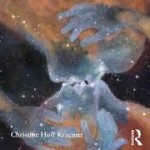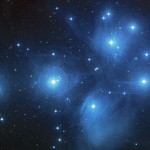Eco-spirituality is a new name for a set of ideas that goes back a long way.
Baruch Spinoza and Giordano Bruno both viewed the universe as divine. Their ideas were broadly pantheistic. The implications of the idea that the universe itself is divine are explored by Sam Webster, who prefers immediacy to immanence. The universe is a theophany, the manifestation of the Divine. The implication here is that everything is sacred, and we should take care of the Earth and other beings; we certainly don’t have dominion over them.
A common trope in Western views of reality is the idea that there is an underlying essence to everything, a pure state of being, and that everything else emanates from that. This is a very pervasive idea, from Plato’s concept of Ideal Forms, all the way to Cartesian dualism. Process theology was an attempt to correct this thinking; its basic premise is that everything is always changing. It also views the Divine as involved in the process of change, and developing as a result of the changes:
For both Whitehead and Hartshorne, it is an essential attribute of God to be fully involved in and affected by temporal processes, an idea that conflicts with traditional forms of theism that hold God to be in all respects non-temporal (eternal), unchanging (immutable), and unaffected by the world (impassible). Process theology does not deny that God is in some respects eternal, immutable, and impassible, but it contradicts the classical view by insisting that God is in some respects temporal, mutable, and passible. (Wikipedia)
As Pagans usually view our deities as neither infinite nor perfect, and many of us regard them as beings on their own spiritual journeys, this makes a lot of sense. Cyclicity and change are regarded as positive in Paganism, so process theology fits in well with that. Indigenous traditions also affirm that process and becoming are natural and inevitable; many indigenous American languages do not translate well into English, because English refers to everything as a fixed state (nouns), whereas they refer to everything as a process.
Gaia theology & theory affirms the idea of the Divine as living, and therefore changing. Gaea theology was developed by Oberon Zell-Ravenheart in 1970, independently of James Lovelock‘s better-known Gaia Theory. Oberon Zell-Ravenheart derived his ideas in part from Pierre Teilhard de Chardin, a Catholic palaeontologist and geologist. Both Zell and Lovelock regarded the Earth as Gaia, a living organism, and named the idea after the Greek Goddess Gaia.
According to Wikipedia:
According to James Kirchner there is a spectrum of Gaia hypotheses, ranging from the undeniable to radical. At one end is the undeniable statement that the organisms on the Earth have radically altered its composition. A stronger position is that the Earth’s biosphere effectively acts as if it is a self-organizing system which works in such a way as to keep its systems in some kind of equilibrium that is conducive to life. Biologists usually view this activity as an undirected emergent property of the ecosystem; as each individual species pursues its own self-interest, their combined actions tend to have counterbalancing effects on environmental change. Proponents of this view sometimes point to examples of life’s actions in the past that have resulted in dramatic change rather than stable equilibrium, such as the conversion of the Earth’s atmosphere from a reducing environment to an oxygen-rich one.
An even stronger claim is that all lifeforms are part of a single planetary being, called Gaia. In this view, the atmosphere, the seas, the terrestrial crust would be the result of interventions carried out by Gaia, through the coevolving diversity of living organisms.
Eco-spirituality embraces an ethic of non-violence and sustainability. Non-violence includes respect for life in all its manifestations (human, non-human, animal, vegetable and mineral); harmonious use of natural resources, with respect for the natural order and cycles of the environment, and development compatible with the ecosystem; and listening to Nature, not dictating to it. In Hinduism, non-violence is known as ahimsa. Sustainability means not using up or depleting the resources available, and maintaining the diversity of ecosystems. Reducing the diversity of an ecosystem, or doing something that creates an imbalance in it, upsets the food web (what eats what in a specific ecosystem).
A key idea in eco-spirituality is deep ecology, which advocates the inherent worth of living beings regardless of their usefulness to humans. Deep ecology argues that the natural world is a subtle balance of complex inter-relationships in which the organisms depend on each other for their existence within ecosystems. This philosophy was named “deep ecology” by Arne Næss in 1973. It is becoming increasingly apparent that a deep ecological approach is needed to ensure sustainability, biodiversity and the continued existence of the human species. Vandana Shiva writes:
‘Deep ecological solutions are the only viable solutions to ensuring that every person on this planet has enough food, has enough water, has adequate shelter, has dignity and has a cultural meaning in life. If we don’t follow the path of living in ways that we leave enough space for other species, that paradigm also ensures that most human beings will be denied their right to existence. A system that denies the intrinsic value of other species denies eighty percent of humanity, their right to a dignified survival and a dignified life. It only pretends that is solving the problems of poverty, it is actually at the root of poverty. And the only real solution to poverty is to embrace the right to life of all on this planet, all humans and all species.’
Another important strand of eco-spirituality is eco-feminism, the idea that the exploitation of the Earth is symbolically linked to the domination of women, with talk of conquest, dominion, and so on; whereas respect for the Earth can be equated with respect for women. This is a big part of contemporary Goddess spirituality, and is obviously related to Gaia theology. In Ecofeminism (1993) authors Vandana Shiva and Maria Mies point out that modern science is not a universal and value-free form of knowledge, regarding the dominant scientific discourse as a projection of Western men’s values.
Another green precept is “Think global, act local“, the idea that before acting, we should look at consequences for the whole biosphere, as well as for the local environment. This is consistent with the Wiccan ethic “An it harm none, do what thou wilt”, which encourages us to look at the consequences of our actions. It also relates to the idea of spirit of place. The Romans honoured the genius loci, and the Greeks honoured the daemon (both terms mean ‘spirit of place’). This was the consciousness inhabiting wood and grove, tree and well, river and lake. Pagans have found that specific locations have a different atmosphere, a sense of presence. Christians have started to talk about ‘thin places’ – liminal places where the numinous can readily be encountered.
One of the things that keeps me Pagan is the importance of wildness. For me, this concept includes the erotic, the instinctive, the intuitive, a sense of connection to Nature, intimacy, freedom, and solitude. It also links in with deep ecology – the valuing of wild places and wild beings for themselves and not for their utility. An excellent book on the subject of reclaiming wildness is Women Who Run With The Wolves by Clarissa Pinkola Estés, a Jungian psychotherapist and traditional storyteller.
Ancient cultures regarded the landscape itself as sacred, and devised sacred geography to describe it. This includes the concept of the four cardinal directions and their associated symbolism; the idea of the World Tree at the centre; and cosmologies with the heavens above, the underworld below, and the Earth in the middle.
So, how do we put these ideas into practice? That will be the topic of the next post.















